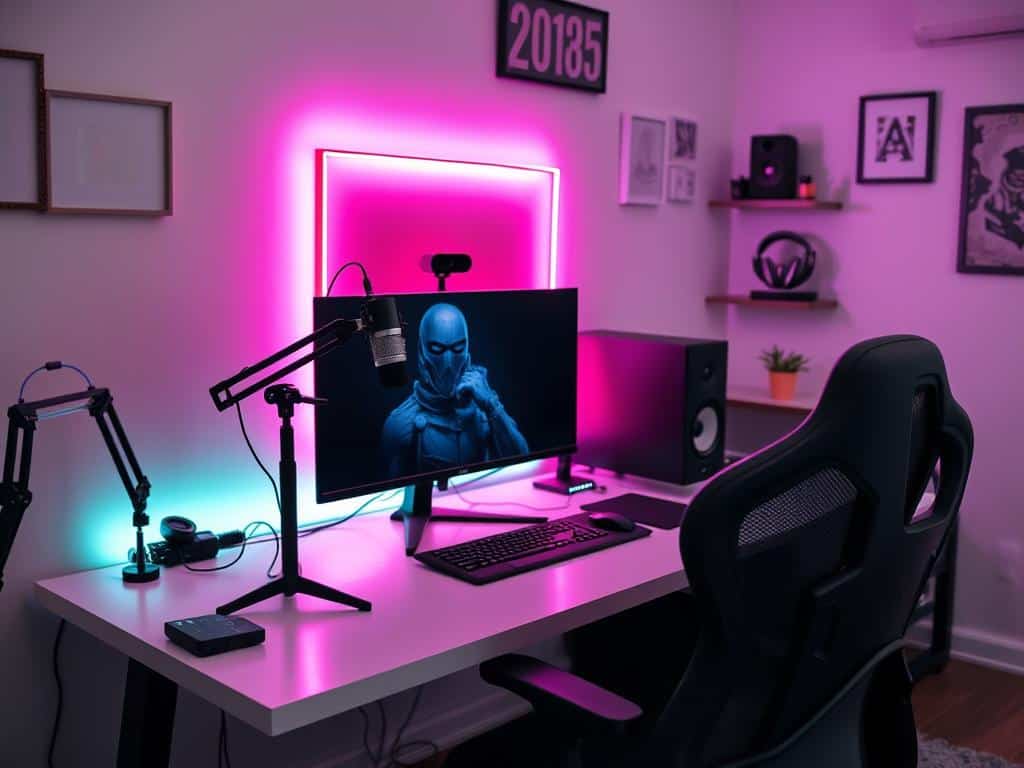Did you know Twitch and LinkedIn Live are big hits? Twitch is for gamers, while LinkedIn Live is for business folks. It’s key to pick the right platform for your audience. Whether you’re a creator or a business pro, the right streaming setup is vital for a great online TV experience.
In this article, I’ll show you how to set up your streaming devices in five easy steps. We’ll cover everything from setting goals to choosing the best software and equipment. By understanding streaming gadgets and platforms, I aim to improve my stream quality and engage more viewers.
Key Takeaways
- Identifying specific goals will enhance the streaming experience.
- Choosing the right platform is key for reaching your audience.
- Good streaming equipment is essential for quality content.
- Advanced software can make streaming easier.
- Streaming from multiple sources boosts engagement and reach.
Planning Your Streaming Setup
Setting up a streaming setup needs careful planning. It’s important to map out your goals, know your audience, and pick the right platforms. This way, you can improve your engagement and streaming quality.
Identify Your Streaming Goals
Start by setting clear goals for your streams. You might want to launch new products, hold Q&A sessions, or share gaming moments. Having specific goals helps you focus your content and connect better with viewers.
Know Your Audience
Understanding your audience is key to creating content they’ll love. Think about who you want to reach and what they’ll enjoy. By using audience insights, you can tailor your streams to meet their needs, boosting engagement and building a loyal fan base.
Choose the Right Platforms for Your Stream
Picking the right platforms is essential for your streaming success. Twitch is great for gamers, while LinkedIn Live is better for business professionals. Look at interaction tools, mobile use, and how you can make money. The right platform can make your streams more effective.

Setting Up Your Streaming Devices
Setting up your streaming devices needs careful attention and a good understanding of what you need. The right equipment can make a big difference in how well you connect with your viewers.
Essential Streaming Equipment
I make sure to get high-quality devices like cameras, microphones, and headphones. A camera with 1080p resolution is key for clear video. Microphones, like lavalier or USB types, are important for good audio.
Headphones are essential for monitoring sound. They help keep your audio clear during streams. I also use tripods and lighting kits to improve the look of my streams.
Choosing the Right Software
Choosing the right streaming software is important. I use OBS Studio and Wirecast for their strong features. These tools help me manage my stream, including video and audio levels.
Good software makes sure my streams run smoothly. It helps me connect better with my audience.
Multi-Source Streaming Options
Using multi-source streaming adds excitement to my streams. I can show different camera angles or add extra media. This keeps my viewers engaged and interested.
Today’s tools make it easy to use multi-source streaming. Even on a budget, I can create professional content.
Conclusion
Creating an effective streaming setup is key to streaming success. By planning and understanding my goals, I tailor my content for my audience. This ensures my streams are engaging and resonate well.
Using the right devices, like the Logitech C270 camera, improves my broadcast quality. Software like OBS Studio and XSplit also play a big role. They make my streams interactive and immersive for viewers.
Staying updated in the streaming world is important. It helps me improve my broadcasts and stand out as a professional. By focusing on these details, I enhance my streaming performance.